Looking back: Canada’s Aviation and Space Museum celebrates the building’s 30-year history
This year, the Canada Aviation and Space Museum is celebrating the thirtieth anniversary of the grand opening of its new building. Originally known as the National Aviation Museum, it actually opened in 1960 at Uplands Airport in Ottawa before the new building was opened on June 17, 1988.
Three decades after that historic day, it’s time to look back at where it all began. The following series of photos offers a snapshot of the museum’s history while two long-time employees, Gail Lacombe and Rénald Fortier, share their unique perspective on what it was like working at the museum over the years.
As one of Ingenium’s newest employees, I enjoyed hearing their stories and learning that as technology advanced and the building and site changed, the tight-knit feel and the passion of the team remained the same.
The Canada Aviation and Space Museum focuses on the history and technology of aviation and space, but in an international context. Lacombe, a graphic designer who has worked at the museum since the opening of the new building, recognizes the above image as an iconic one that was used in many early marketing and promotional materials.
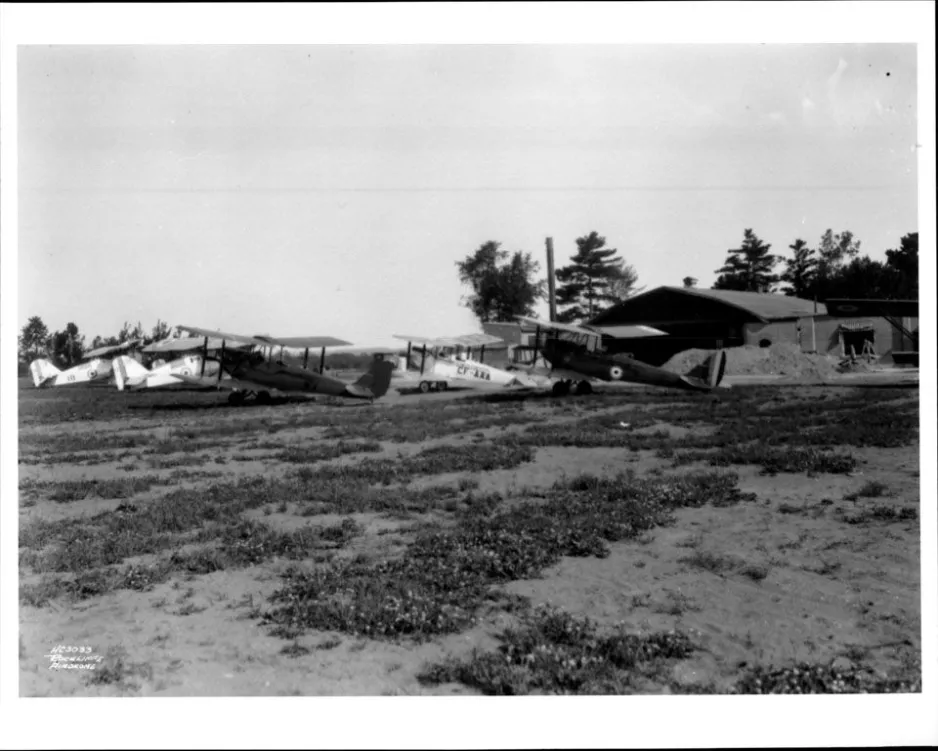
A lineup of period civilian and RCAF aircraft parked in front of an old hangar at Rockcliffe, ca 1930.
The museum is located on the historic Rockcliffe airport site, which was, in the late 1890s, a rifle range before becoming a base for the Royal Canadian Air Force (RCAF) in 1924.
Fortier, presently a curator, joined the museum as a researcher on contract about 18 months before the opening. He became an education officer in the fall of 1987. He explains that while a large percentage of the aircraft on display at the museum are military, the collection includes both military and civilian aircraft. The museum’s space mandate was added about 10 years ago.

Date unknown. Level 1 plans showing Phase 2 of National Aviation Museum construction.
After the RCAF ceased flying operations at Rockcliffe in 1964, Canada’s National Aeronautical Collection (a merger of collections from the National Aviation Museum, the Canadian War Museum and the RCAF) was established and housed in three Second World War hangars on the south side of the field. In the mid-80s, construction of the new museum was underway.

Date unknown. A 3D model of the National Aviation Museum.
“Leading up to the opening, it was crazy,” remembers Lacombe.
As a graphic designer, one of Lacombe’s main responsibilities was to design the consoles, which are the information panels that explain the details of each aircraft in an exhibition. The consoles for the new building were designed using computers—Apple’s MacPlus to be exact—which was a first for the corporation.
“There was a lot of overtime, but now we can do a lot more in less time because of the technology. Now producing 40–something consoles doesn’t seem like so much,” she says.

The National Aviation Museum during construction.
Fortier, whose contribution to the opening of the museum was as a “gopher” for the design team, describes his current curator position as really variable but echoes Lacombe’s sentiments that technology has changed aspects of his role. He explains that a big part of his job as a curator used to be responding to public inquiries, for example, but now people are opting to conduct their own research online.
This change has allowed Fortier to focus on sharing his aviation expertise with staff in the museum’s shops, as well as those developing public programs. His primary focus now is on collections, either acquiring, documenting, or de-acquisitioning.

Construction showing support pillars that can be seen throughout the museum today.
Lacombe, who was not an aviation enthusiast prior to joining the museum, says she used to watch a lot of movies to get into it and everyone in the office became immersed in talk about aircraft.
“It makes us really good trivia people – to get the feel for the period and what it was like, so you can convey that feeling to the visitor. What’s so neat about my job is that it’s like a little mini university course in a lot of subjects.”

The floor of the museum during construction, showing support pillars in place
One of Fortier’s favourite exhibitions? An exhibition with the Stewart Museum in Montreal and the Musée de l’Air et de l’Espace in Paris on ballooning, which opened around 1995.
“The Paris museum loaned us a slew of material that was on display in the mezzanine. Most of it was original material so we were hosting this international exhibition here. I was a researcher working on it and they shipped me to Paris for two weeks to look at illustrations, etc. that could be used for the exhibition on eighteenth-century ballooning. It went to the Stewart Museum and it traveled for a while,” he remembers.
“As far as I could tell it was quite popular with the visitors. There was lots of material, from snuff boxes to fans, plates, cups.”

An aerial view of the museum during construction
Lacombe describes the museum as a beautiful building and a great place to work, adding that the delta shape of the building visible in the aerial photo was integrated into one of the museum’s very first logo designs.
The team is very passionate, Lacombe adds, and she has fond memories of the design team having a lot of fun together – and even designing aviation-themed sweatshirts to wear as a group!
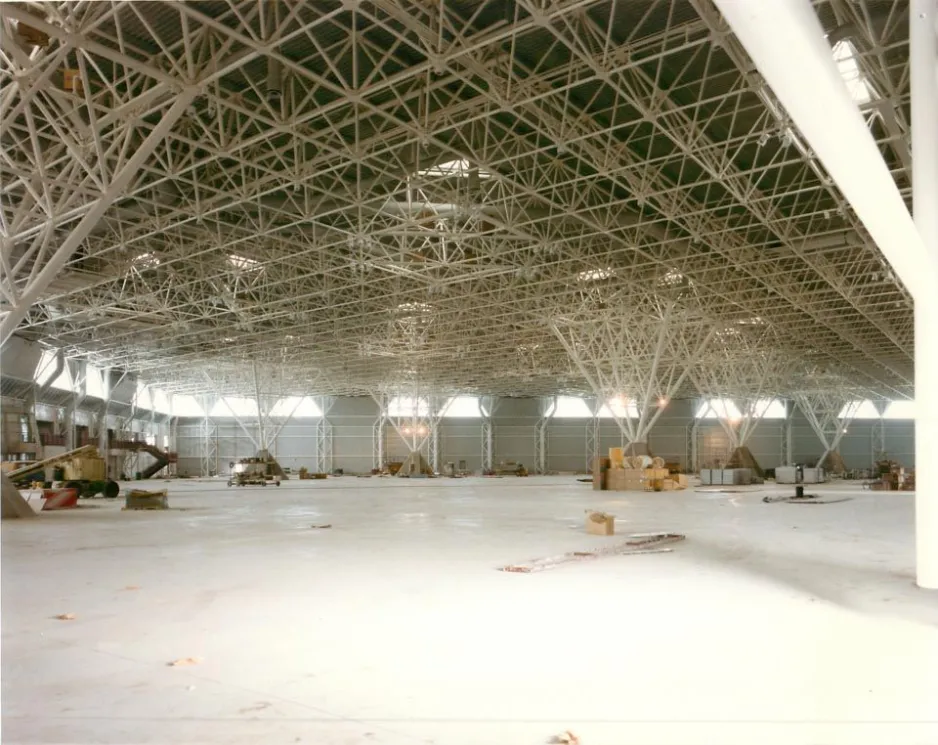
The floor of the museum during construction
Fortier shares Lacombe’s sentiment about the ongoing passion of the museum’s team over the years.
“The team here has always been great and the spirit quite high. The same people would stay here for long periods of time so they have made their career here.”
He adds, “Regardless of the department, whether it’s the shop, public relations, or curatorial, it’s a dedicated and passionate staff.”

Museum director R.W. Bradford delivering a speech on opening day for the National Aviation Museum, June 17, 1988.
“The opening was pretty much a zoo,” laughs Fortier. “But definitely a highlight.”
He remembers a very busy day, plenty of balloons, and many VIPs present, including the Governor General, the Right Honourable Jeanne Sauvé.
“I recall being summoned to the front and asked to do an interview in French because I was the only French-speaking person on staff who was thought to have a good knowledge of aviation and its history. I was never involved with media before. I was probably too shocked to be afraid, but I think it went well, or not too badly at least!”

Museum director R.W. Bradford with the Right Honourable Jeanne Sauvé, Governor General of Canada, (second from right) and Flora MacDonald, Minister of Communications (far right) on opening day for the National Aviation Museum, June 17, 1988.
“The night before the opening, once everything was done, it was midnight and we were admiring our work – kind of like the calm before the storm!” recalls Lacombe, who agrees with Fortier that opening day was a busy one.
“I remember it was outside and it was hot and sunny, there was food in the tents and everyone got to walk around and see the museum.”

The National Aviation Museum’s founding curator, K.M. Molson, (left) shakes hands with Punch Dickins, a pioneering Canadian aviator at the International Association of Transport Museums Conference, held September 26-30, 1988.
Aviation plays an integral role in Canada and therefore the opening of the museum was significant for all Canadians and future generations.
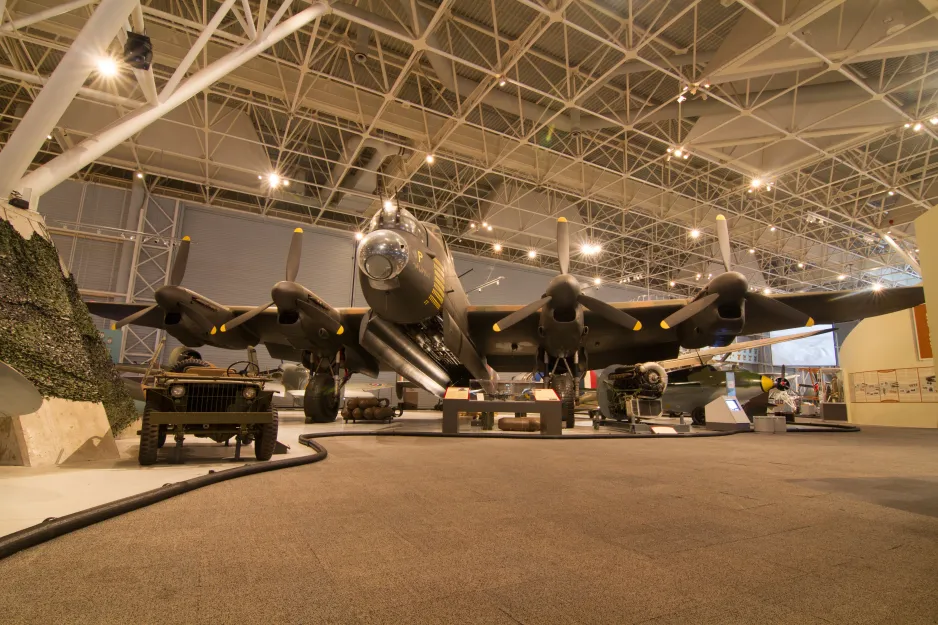
The Avro 683 Lancaster X. Used in many successful bombing raids (mostly nighttime), "the Lanc" was probably the most widely-known heavy bomber of the Second World War.
“Canada is a huge area with a very small population, so the need for transportation and communication is vital. Here, going from point A to point B can be very complicated so since the early twentieth century, aviation has been a part of Canada and integral as a form of communication and transport,” Fortier explains.
“The aviation industry is vital and the role to be played by industry must be recognized, documented, and preserved so people can see and learn about the history of aviation in Canada and around the globe, to a point.”
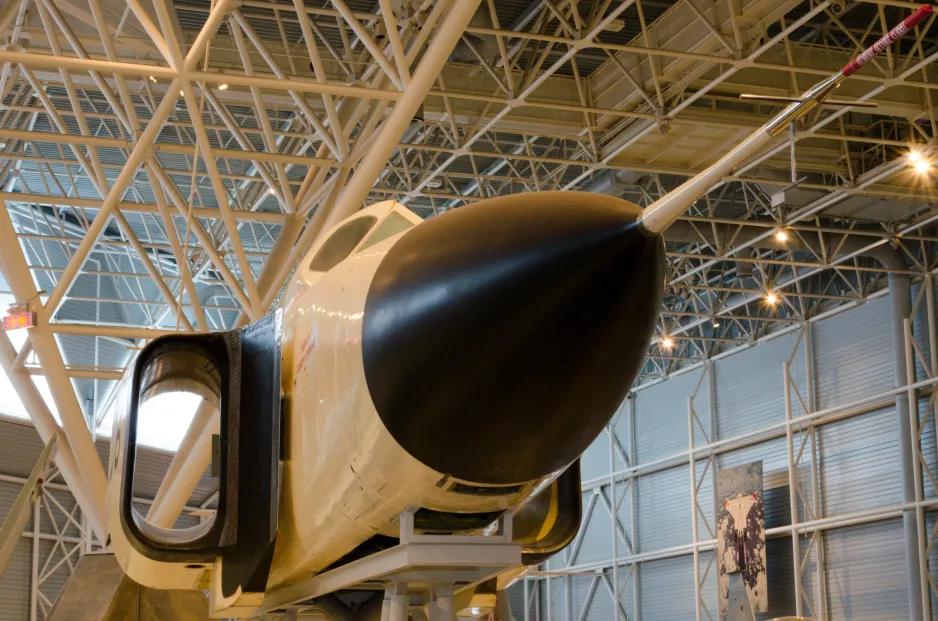
A technical masterpiece at the forefront of aviation engineering during its time, the CF-105 Arrow was intended to replace the Avro Canada CF-100.
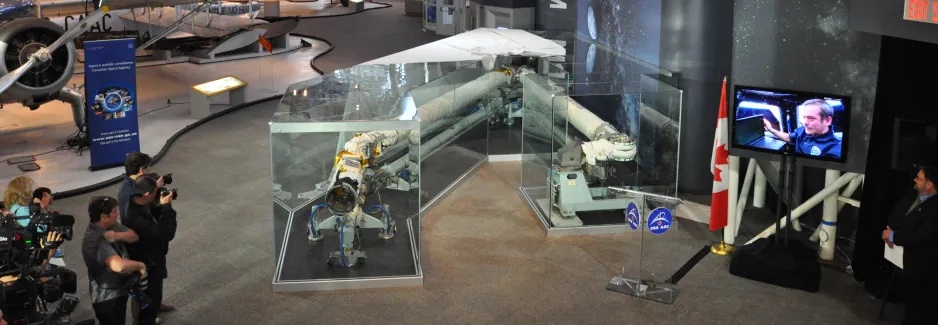
Unveiling of a Canadarm with Canadian astronaut Chris Hadfield. This Canadarm, loaned by the Canadian Space Agency, was an element of Canada's contribution to the U.S. Space Shuttle Program and a successful commercial venture for Canada’s space industry.
Lacombe is also enthusiastic about the museum’s offerings.
“It’s a world-class collection. It’s pretty amazing. You really don’t have to love airplanes to come here and enjoy the collection.”
Lacombe continues, “And now we have added space… both physical and in terms of a programming area, so there is something for everyone, generalist or enthusiast!”



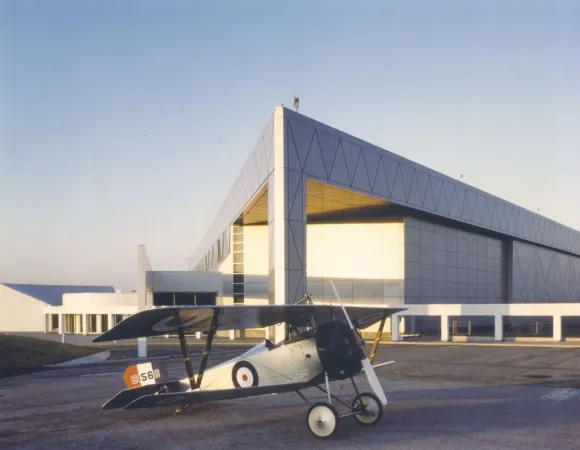
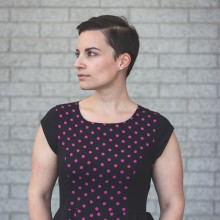




![A block of photographs showing some of the people involved in the bombing of beluga whales in the estuary and gulf of the St. Lawrence River. Anon., “La chasse aux marsouins [sic]. » Le Devoir, 15 August 1929, 6.](/sites/default/files/styles/thumbnail_7/public/2024-09/Le%20Devoir%2015%20aout%201929%20page%206.jpg?h=584f1d27&itok=TppdLItg)






